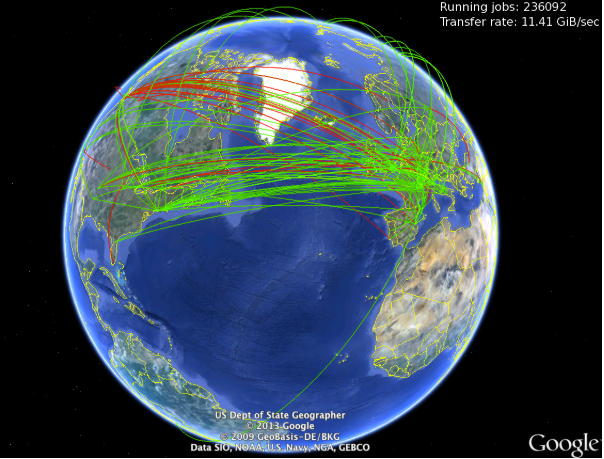De svenska partikelfysiker som arbetar med ATLAS-experimentet vid Large Hadron Collider (LHC) på CERN är del av ett samarbete som omfattar mer än 3000 personer från hela världen. Så många människor med olika expertis behövs för att köra en komplex detektor, hantera dess enorma datamängder och för att genomföra dataanalysen, i ett internationellt “Big Science”-sammanhang. Att samarbeta på distans är normen för LHC-fysiker, så covid-19-pandemin har inte ändrat deras mötes- eller diskussionsvanor i någon större utsträckning. Dataanalysen genomförs också på distans genom en distribuerad beräkningsinfrastruktur som kallas “Worldwide LHC Computing Grid” (WLCG). WLCG kan ses som en motsvarighet till elnätet som vi alla använder, men istället för elektricitet levererar det den beräkningskraft som behövs för att göra databearbetning och dataanalys med LHC-data. Efter diskussioner med WHO om var hjälp behövdes som bäst, har CERN låtit en del av detta beräkningsnätverk köra frivilliga beräkningar för att förstå coronavirusets struktur, vilket har haft en signifikant effekt i kampen mot viruset. Mer information finns i den presentation som David South höll under ett seminarium vid Fysikum i Lund. För att komma till seminariet kan du klicka här.

Google Earth och WLCG – för att göra din egen karta och se dataflödena i realtid, följ instruktionerna här: https://wlcg.web.cern.ch/wlcg-google-earth-dashboard
English version (translation above by Elin Bergeas Kuutmann)
Swedish particle physicists involved in the ATLAS experiment at the Large Hadron Collider at CERN work as part of a collaboration of more than 3000 people from all over the world. Such a large number of people with different expertises is needed to operate a complex detector, the management of its vast amounts of data, and to perform the data analysis, in an international “Big Science” situation. Working remotely with colleagues is the norm for LHC physicists as well for astrophysicists in large collaborations, so the COVID-19 situation did not significantly change their meeting and discussion habits. The data analysis is also performed remotely through a distributed computing infrastructure called “Worldwide LHC Computing Grid” (WLCG). The WLCG can be thought of as an equivalent of the electrical grid we all use, but instead of electricity it provides the computing power needed for LHC data processing and analysis. After asking the WHO for where help was needed, and among other initiatives, CERN has made parts of this computing grid to run volunteer computing to understand the structure of the novel coronavirus, with a significant impact in the fight against the virus. More information can be found in David South’s presentation at the Lund Fysikum seminar (Rydberg seminar). Click here to redirect to the seminar.
